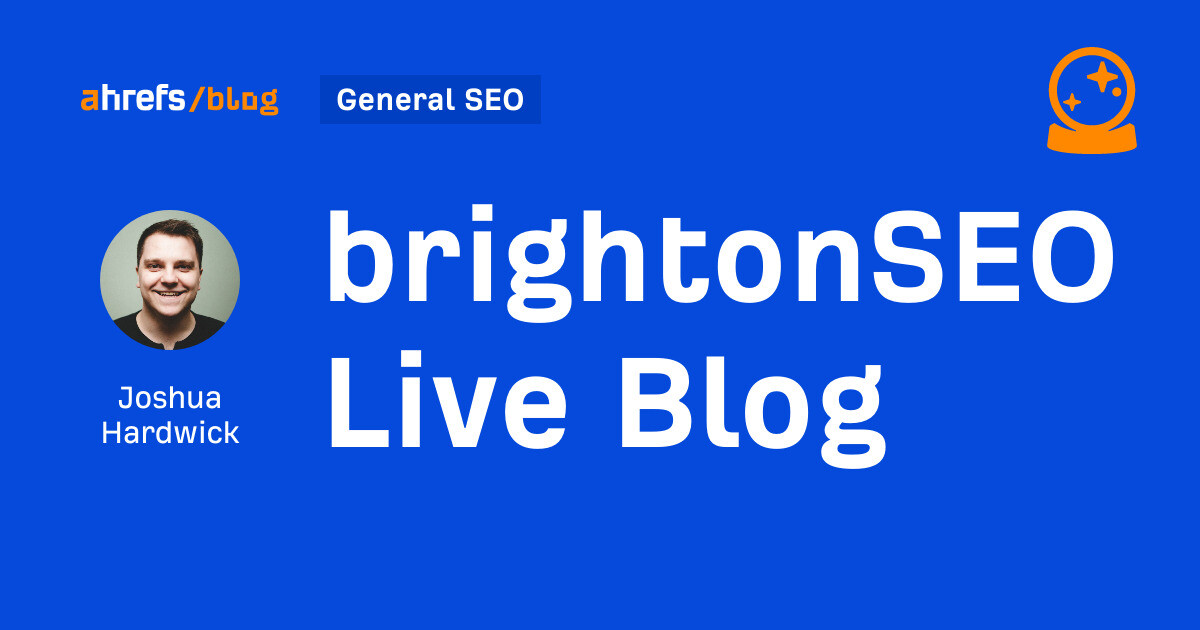SEO
How To Create Your Instagram Content Plan

Are your Instagram posts not bringing desired results?
Then maybe you need to think about reshaping your strategy and create a content plan.
Content plans can help guide how you release content to make sure you’re hitting certain goals and help your content perform better.
In this guide, you’ll learn how to create a content plan that increases brand reach and conversions on Instagram. You’ll also learn some helpful tips to help boost your content.
1. Define Your Goal
The first thing you want to do is create your Instagram goal or goals.
What do you want to accomplish? Is it to grow your audience, drive more engagement, or generate sales?
Once you figure out your plan, you’ll be better prepared to tailor your content to meet those goals.
Then, you can set the key performance indicators (KPIs) to mark different points of analysis you want to observe along with your Instagram campaign.
After you select your goal and some KPIs, it’s beneficial to break down your goal into different milestones you would like to reach along the way.
For example, let’s say you want to grow your audience by 20% by the end of the quarter.
What are some milestones along the way you can mark to achieve that goal? What types of content, topics, or content series can you create to increase engagement?
Now, that you’ve done some brainstorming, it’s time to start building your content calendar.
2. Plan Your Content Calendar
A content calendar is important because it’s your roadmap to guide your path, help you meet your goals, and set an end date for a campaign.
This way, you’ll know when you’ve met your goal and can readjust and analyze ways to improve your content strategy for your next campaign.
In addition, a content calendar can help keep ideas and campaigns organized, help you identify any content gaps, and help build consistency (which is critical for Instagram).
When creating your content plan for the month, quarter, or recent campaign, it’s helpful to plot out which days of the week you want to talk about what.
Next, choose the topic and then form the right caption.
Break content planning into smaller actionable steps makes it easier to make a content calendar.
Then, if you have your goals, topics laid out, and captions, you can move to the next step: Create the necessary pictures or videos.
Finally, you can compile your topics, days you’re posting, and captions and hashtags into a simple Google, Word, or Excel doc so you can easily copy and paste when you’re ready to schedule out your content.
Bonus Tip: Align Your Content With Marketing Initiatives
If you already have some marketing initiatives, it’s the perfect time to incorporate them into your marketing campaign. For example, maybe you have a new product release.
Then, you can create a content series for that. Create a couple of posts teasing the release of the product, include a giveaway, have an influence to promote your product or a video with them using it, and market those benefits.
Events or holidays are another great way to get consumers engaged and turn more consumers into customers.
If you have an event coming up, you can create a campaign hyping the event and discussing the speakers involved, products that will be there, or awesome grab bags you’re giving away at the event.
Holidays are another fun and positive way to get customers talking about your brand. Holiday giveaways or deals are another way to grow brand awareness and gain followers.
3. Keep A Consistent Theme And Tone
Creating a tone or brand guide can be an effective way to make sure you keep posts consistent. You also want to maintain a similar theme throughout your posts, including style, font, and colors.
For inspiration, you can look at your website, content, and logos to help create the proper tone and theme for your posts.
In addition, Instagram has the tools in stories that can help you get a color scheme that complements your brand.
You also want to think about the look of your content for both pictures and videos. Consider a consistent angle or filter to set the right tone and look for your content.
It’s also vital to think about your messaging, whether it’s for captions, comments, or responses to direct messages.
It’s crucial to have a standard operating procedure for how you respond to consumers on Instagram, especially if you have multiple people responding to comments and messages, to ensure it’s within the brand’s tone.
4. Showcase Your Creativity
IG is more than just a photo-sharing app. There are many different ways to create content for Instagram that can highlight your brand and increase engagement.
Let’s talk through them and share some tips on when to use them.
As you know, Instagram has pictures. Pictures are a great way to showcase products. It’s also great for sharing quotes, posing questions you answer in your image caption, or promoting deals or giveaways.
Videos are an excellent way to show sneak peeks of something coming up or create product teasers. You can also use videos for business BTS and show how to best use your product.
You can use Instagram Reels, or short videos, to showcase products, share stories, and grow your audience.
IGTV or Instagram TV are longer videos on an Instagram feed. Brands use these to go more in-depth into describing a particular topic.
Instagram Shopping is a feature that allows consumers to shop your products through your photos and videos.
Brands can create product tags and product launches where consumers can purchase products straight through Instagram.
Then, customers don’t have to take the step to leave Instagram to go to your website. Instead, they can quickly buy through the app.
Stories are photos or videos that last 24 hours (unless you add them to your highlights on your profile) where you can share posts from your profile or post new content. It’s a popular way to gain more followers and engage with consumers.
User-Generated Content or content created by influences, customers, or other users is a great way to extend your reach to different audiences and further promote your products.
People are more intrigued to learn about a new product if it’s promoted by someone they already follow.
Likewise, it can help build trust with consumers new to your brand if they see a post by a customer who already loves it.
But what content goes viral? It can be beneficial to look at what your competitors are people on Instagram creating and put your brand’s unique twist on it.
5. Craft Compelling Captions And CTAs
While it’s great to have high-quality pictures and engaging videos, the captions and call to action still matter.
If you hooked the consumer with your picture or video, you want to reel them in with your caption and CTA.
It’s essential to take time crafting the right CTA to ensure consumers follow your page, engage with your post, or purchase your product.
6. Choose The Correct Hashtags
It’s also crucial to research and choose the right hashtags to ensure your posts reach the intended audience and some new ones that might be interested in your brand.
Hashtags allow your content to reach users beyond your profile’s following. As you create content for specific hashtags, note which posts perform particularly well.
That way, you can create future posts for specific hashtags that will increase your content’s visibility.
7. Know The Best Time To Post
Planning posts ahead of time can help alleviate some stress of social media strategy.
You can use Meta Business Suites to schedule posts for Facebook and Instagram and set posts for a week or a couple of weeks.
If you’re unsure when to post, they have suggested days and times where analysis points to where you’ll get the most engagement and views.
Although, it would be beneficial to do some research specific to your industry to see the best time and day to make your posts.
One important thing to keep in mind when you’re planning your content is the upcoming holidays.
Are you going to make a post celebrating the holiday, use the holiday to do a promotion or give away, or choose not to post on that day altogether?
No matter what you pick, it’s important to keep holidays in mind.
8. Measure Results And Adjust
Instagram Insights, both on the app and through Meta Business Suites, can show how many views a post gets and statistics on the engagement with the posts to help you see which types of content are working best. You can see your content’s likes, shares, comments, and saves.
Brands can also use Insights to get metrics on the paid activity. Insights are a great way to see trends so that you can adjust your content strategy.
You’ll also be able to see metrics into your followers to see how many you’re receiving, the age of your followers, and information on when they are most active online. This way, you can adjust the times you post to ensure you are better at reaching your audience.
Wrapping Up
Content planning is the best way to help boost reach and engagement on Instagram.
Creating a content calendar inspired by current marketing objectives and tailoring your content with a theme backed by metrics is the best way to help meet your goals.
More Resources:
Featured Image: alinabuphoto/Shutterstock
SEO
Google Declares It The “Gemini Era” As Revenue Grows 15%

Alphabet Inc., Google’s parent company, announced its first quarter 2024 financial results today.
While Google reported double-digit growth in key revenue areas, the focus was on its AI developments, dubbed the “Gemini era” by CEO Sundar Pichai.
The Numbers: 15% Revenue Growth, Operating Margins Expand
Alphabet reported Q1 revenues of $80.5 billion, a 15% increase year-over-year, exceeding Wall Street’s projections.
Net income was $23.7 billion, with diluted earnings per share of $1.89. Operating margins expanded to 32%, up from 25% in the prior year.
Ruth Porat, Alphabet’s President and CFO, stated:
“Our strong financial results reflect revenue strength across the company and ongoing efforts to durably reengineer our cost base.”
Google’s core advertising units, such as Search and YouTube, drove growth. Google advertising revenues hit $61.7 billion for the quarter.
The Cloud division also maintained momentum, with revenues of $9.6 billion, up 28% year-over-year.
Pichai highlighted that YouTube and Cloud are expected to exit 2024 at a combined $100 billion annual revenue run rate.
Generative AI Integration in Search
Google experimented with AI-powered features in Search Labs before recently introducing AI overviews into the main search results page.
Regarding the gradual rollout, Pichai states:
“We are being measured in how we do this, focusing on areas where gen AI can improve the Search experience, while also prioritizing traffic to websites and merchants.”
Pichai reports that Google’s generative AI features have answered over a billion queries already:
“We’ve already served billions of queries with our generative AI features. It’s enabling people to access new information, to ask questions in new ways, and to ask more complex questions.”
Google reports increased Search usage and user satisfaction among those interacting with the new AI overview results.
The company also highlighted its “Circle to Search” feature on Android, which allows users to circle objects on their screen or in videos to get instant AI-powered answers via Google Lens.
Reorganizing For The “Gemini Era”
As part of the AI roadmap, Alphabet is consolidating all teams building AI models under the Google DeepMind umbrella.
Pichai revealed that, through hardware and software improvements, the company has reduced machine costs associated with its generative AI search results by 80% over the past year.
He states:
“Our data centers are some of the most high-performing, secure, reliable and efficient in the world. We’ve developed new AI models and algorithms that are more than one hundred times more efficient than they were 18 months ago.
How Will Google Make Money With AI?
Alphabet sees opportunities to monetize AI through its advertising products, Cloud offerings, and subscription services.
Google is integrating Gemini into ad products like Performance Max. The company’s Cloud division is bringing “the best of Google AI” to enterprise customers worldwide.
Google One, the company’s subscription service, surpassed 100 million paid subscribers in Q1 and introduced a new premium plan featuring advanced generative AI capabilities powered by Gemini models.
Future Outlook
Pichai outlined six key advantages positioning Alphabet to lead the “next wave of AI innovation”:
- Research leadership in AI breakthroughs like the multimodal Gemini model
- Robust AI infrastructure and custom TPU chips
- Integrating generative AI into Search to enhance the user experience
- A global product footprint reaching billions
- Streamlined teams and improved execution velocity
- Multiple revenue streams to monetize AI through advertising and cloud
With upcoming events like Google I/O and Google Marketing Live, the company is expected to share further updates on its AI initiatives and product roadmap.
Featured Image: Sergei Elagin/Shutterstock
SEO
brightonSEO Live Blog

Hello everyone. It’s April again, so I’m back in Brighton for another two days of Being the introvert I am, my idea of fun isn’t hanging around our booth all day explaining we’ve run out of t-shirts (seriously, you need to be fast if you want swag!). So I decided to do something useful and live-blog the event instead.
Follow below for talk takeaways and (very) mildly humorous commentary. sun, sea, and SEO!
SEO
Google Further Postpones Third-Party Cookie Deprecation In Chrome

Google has again delayed its plan to phase out third-party cookies in the Chrome web browser. The latest postponement comes after ongoing challenges in reconciling feedback from industry stakeholders and regulators.
The announcement was made in Google and the UK’s Competition and Markets Authority (CMA) joint quarterly report on the Privacy Sandbox initiative, scheduled for release on April 26.
Chrome’s Third-Party Cookie Phaseout Pushed To 2025
Google states it “will not complete third-party cookie deprecation during the second half of Q4” this year as planned.
Instead, the tech giant aims to begin deprecating third-party cookies in Chrome “starting early next year,” assuming an agreement can be reached with the CMA and the UK’s Information Commissioner’s Office (ICO).
The statement reads:
“We recognize that there are ongoing challenges related to reconciling divergent feedback from the industry, regulators and developers, and will continue to engage closely with the entire ecosystem. It’s also critical that the CMA has sufficient time to review all evidence, including results from industry tests, which the CMA has asked market participants to provide by the end of June.”
Continued Engagement With Regulators
Google reiterated its commitment to “engaging closely with the CMA and ICO” throughout the process and hopes to conclude discussions this year.
This marks the third delay to Google’s plan to deprecate third-party cookies, initially aiming for a Q3 2023 phaseout before pushing it back to late 2024.
The postponements reflect the challenges in transitioning away from cross-site user tracking while balancing privacy and advertiser interests.
Transition Period & Impact
In January, Chrome began restricting third-party cookie access for 1% of users globally. This percentage was expected to gradually increase until 100% of users were covered by Q3 2024.
However, the latest delay gives websites and services more time to migrate away from third-party cookie dependencies through Google’s limited “deprecation trials” program.
The trials offer temporary cookie access extensions until December 27, 2024, for non-advertising use cases that can demonstrate direct user impact and functional breakage.
While easing the transition, the trials have strict eligibility rules. Advertising-related services are ineligible, and origins matching known ad-related domains are rejected.
Google states the program aims to address functional issues rather than relieve general data collection inconveniences.
Publisher & Advertiser Implications
The repeated delays highlight the potential disruption for digital publishers and advertisers relying on third-party cookie tracking.
Industry groups have raised concerns that restricting cross-site tracking could push websites toward more opaque privacy-invasive practices.
However, privacy advocates view the phaseout as crucial in preventing covert user profiling across the web.
With the latest postponement, all parties have more time to prepare for the eventual loss of third-party cookies and adopt Google’s proposed Privacy Sandbox APIs as replacements.
Featured Image: Novikov Aleksey/Shutterstock
-

 PPC7 days ago
PPC7 days ago19 Best SEO Tools in 2024 (For Every Use Case)
-
SEARCHENGINES6 days ago
Daily Search Forum Recap: April 19, 2024
-
SEARCHENGINES7 days ago
Daily Search Forum Recap: April 18, 2024
-

 WORDPRESS6 days ago
WORDPRESS6 days agoHow to Make $5000 of Passive Income Every Month in WordPress
-

 WORDPRESS5 days ago
WORDPRESS5 days ago13 Best HubSpot Alternatives for 2024 (Free + Paid)
-

 SEO7 days ago
SEO7 days ago25 WordPress Alternatives Best For SEO
-

 WORDPRESS6 days ago
WORDPRESS6 days ago7 Best WooCommerce Points and Rewards Plugins (Free & Paid)
-

 MARKETING6 days ago
MARKETING6 days agoBattling for Attention in the 2024 Election Year Media Frenzy
















You must be logged in to post a comment Login